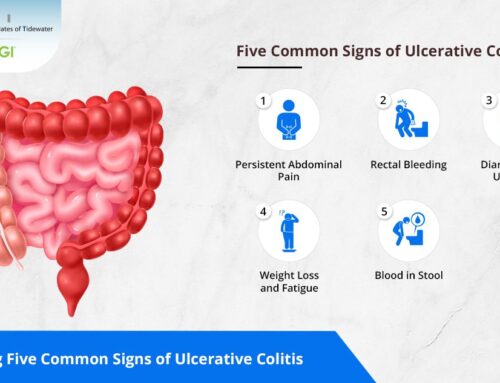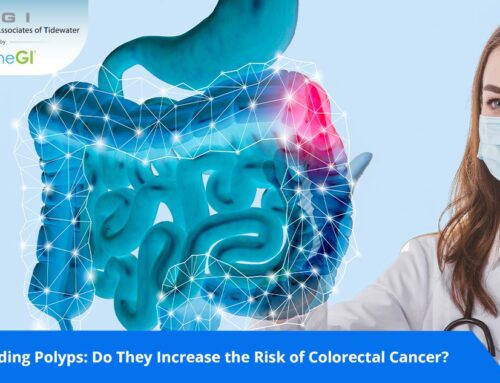Gluten-related disorders are now widely discussed in medical offices as well in the community. Gastrointestinal (GI) issues due to gluten intake can significantly affect one’s quality of life. But when you struggle with GI discomfort, how do you know if you’re dealing with celiac disease or if you have non-celiac gluten sensitivity? In this comprehensive exploration, we plan to unravel the complexities surrounding these conditions, particularly for those seeking guidance on a celiac disease diet and the best celiac disease doctors in Virginia Beach.
What is Celiac Disease?
Celiac disease is an autoimmune disorder in which the ingestion of gluten—a protein found in wheat, rye, and barley—triggers an immune response that attacks the small intestine. This can lead to damage to the villi, which are tiny finger-like projections that line the gut and promote nutrient absorption.
Signs and Symptoms of Celiac Disease
Celiac disease can manifest through a variety of symptoms that range from mild to severe, affecting multiple systems in the body. Common gastrointestinal symptoms include
- chronic diarrhea
- abdominal pain
- bloating
- constipation
However it can also cause symptoms unrelated to the digestive system. These can include
- iron-deficiency anemia
- fatigue
- joint pain
- skin rash known as dermatitis herpetiformis
- failure to thrive and delayed growth in children
- dental enamel defects
- headaches
- mood disorders like depression and anxiety
It is crucial to note that some people with celiac disease may be asymptomatic, which means they display no obvious symptoms at all, yet they can still suffer from intestinal damage.
What is Non-Celiac Gluten Sensitivity?
Non-celiac gluten sensitivity (NCGS), on the other hand, is not an autoimmune condition. Those with NCGS experience symptoms similar to those of celiac disease, such as bloating, abdominal pain, or fatigue after consuming gluten. However, NCGS does not come with the same intestinal damage or risk for additional health complications associated with celiac disease.
Diagnosing the Differences
Celiac Disease
Diagnosing celiac disease involves several steps:
- Blood tests: Prior to commencing a gluten-free diet, specific serology tests can detect elevated levels of antibodies. These include immunoglobulin A (IgA) anti-tissue transglutaminase (tTG) and IgA anti-endomysial antibodies (EMA).
- Genetic testing: Genetic testing can also be done to identify the presence of certain genes that predispose individuals to celiac disease, including HLA-DQ2 and HLA-DQ8.
- Endoscopic biopsy: If the results of blood tests show positive, an endoscopy is done to confirm the diagnosis. During this procedure, a small tissue sample from the small intestine is taken and examined for changes characteristic of celiac disease.
Endoscopic Biopsy
An endoscopic biopsy procedure is conducted by gastroenterologists and involves the insertion of a long, thin tube called an endoscope through the mouth and into the small intestine. The endoscope is equipped with a camera and a tool for removing tissue samples. As the camera relays images to a monitor, the physician can visually inspect the lining of the small intestine for signs of villous atrophy and inflammation. Tiny samples of the intestinal tissue are then taken using the biopsy tool. These samples are examined under a microscope by a pathologist to look for damage to the villi indicative of celiac disease, ensuring a definitive diagnosis.
Gluten Sensitivity
For NCGS, there’s no definitive test. Diagnosing primarily involves:
- Ruling out celiac disease and wheat allergy: This ensures symptoms are not due to other conditions.
- Gluten elimination and reintroduction: Symptom improvement during gluten elimination and recurrence upon reintroduction can suggest NCGS.
Diagnosis of NCGS is not as straightforward, mainly because there are no specific biomarkers or tests to diagnose it. However, the absence of celiac disease and wheat allergy combined with an improvement in symptoms on a gluten-free diet can support diagnosis.
If symptoms persist despite the absence of these conditions, and an improvement is noticed once gluten is removed from the diet, NCGS may be the culprit. While this process does not involve invasive procedures like an endoscopic biopsy, it remains a challenge in the field to establish clear diagnostic criteria due to the variability of symptoms and lack of specific biomarkers.
For more information on following a healthy gluten-free diet, read The Benefits of a Gluten-Free Diet and Healthy Gluten-Free Diet to Prevent Nutritional Deficiencies in Celiac Patients
For more information on celiac disease or if you have concerns about your digestive health, schedule an appointment with a board-certified gastroenterologist at Gastroenterology Associates of Tidewater, by calling (757) 547-0798.






